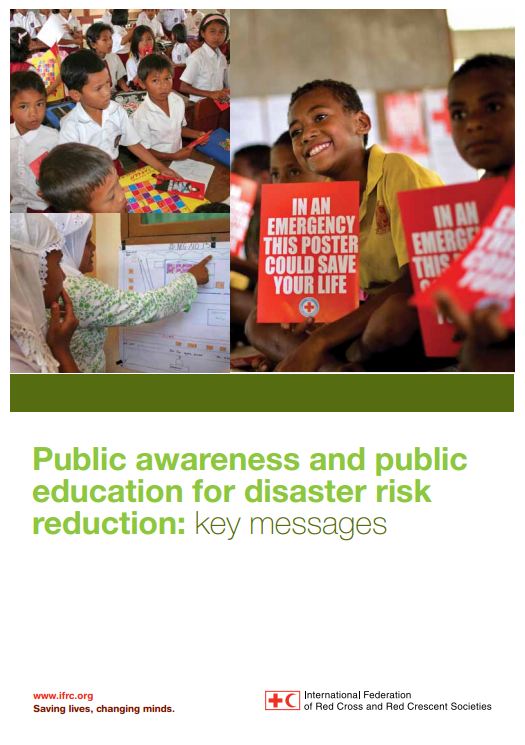Public Awareness and Public Education for Disaster Risk Reduction: A Guide
Purpose
This guide is designed to help National Societies to plan and develop public awareness and public education efforts for disaster risk reduction. The guide sets out approaches and tools for public awareness and public education in disaster risk reduction already widely in use by National Societies. It pulls together a range of research on risk communications and public education for behaviour change, and practitioners’ own discoveries in applying these.
Overview
- Key public awareness and public education campaigns approaches are: participatory learning; informal education; and formal school-based interventions. There are three types of tools that can be used to implement these approaches: one-way broadcast (from one single source to a wide audience); two-way face-to-face interactions; and ‘many-to-many’ interactions (as in social networking using telephone and web tools). Evidence shows that using a combination of these types of contact is the best way to support the process of behaviour change.
- The underlying principles on which the strategic framework and the approaches rest are: legitimacy and credibility, consistency, scalability and sustainability. Strategies and ideas under consideration can be measured against these principles during the planning process.
- Four key ingredients for raising awareness effectively are: a well-crafted message; powerful imagery; an engaging and compelling tone; and adapted, localised content.
Usage: Guidance for project implementation; Monitoring and evaluation
Audiences: Technical staff; Communication staff
See also: Public Awareness and Public Education for Disaster Risk Reduction: Key Messages
![]()



